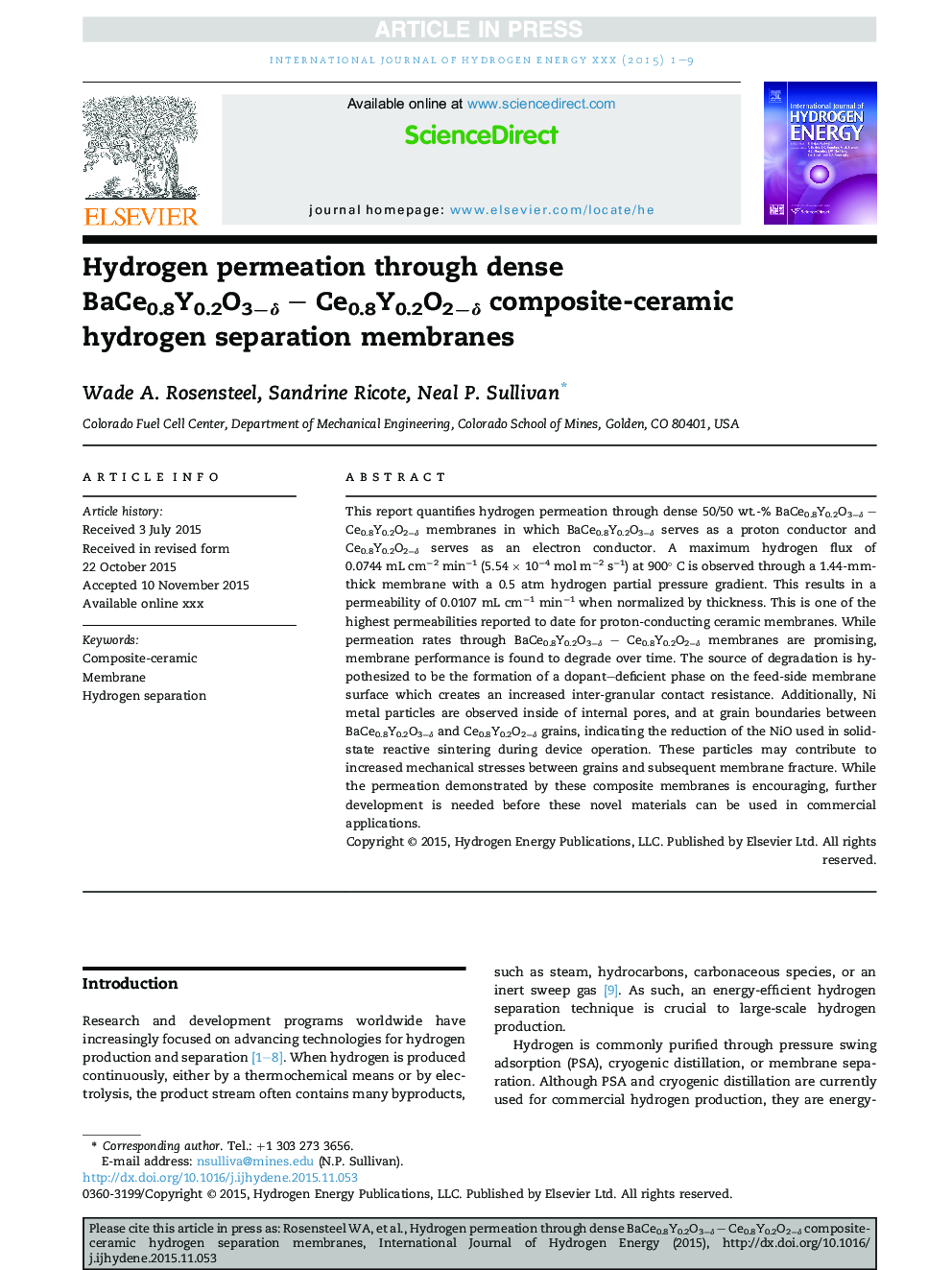| Article ID | Journal | Published Year | Pages | File Type |
|---|---|---|---|---|
| 7712018 | International Journal of Hydrogen Energy | 2016 | 9 Pages |
Abstract
This report quantifies hydrogen permeation through dense 50/50 wt.-% BaCe0.8Y0.2O3âδ - Ce0.8Y0.2O2âδ membranes in which BaCe0.8Y0.2O3âδ serves as a proton conductor and Ce0.8Y0.2O2âδ serves as an electron conductor. A maximum hydrogen flux of 0.0744 mL cmâ2 minâ1 (5.54 Ã 10â4 mol mâ2 sâ1) at 900° C is observed through a 1.44-mm-thick membrane with a 0.5 atm hydrogen partial pressure gradient. This results in a permeability of 0.0107 mL cmâ1 minâ1 when normalized by thickness. This is one of the highest permeabilities reported to date for proton-conducting ceramic membranes. While permeation rates through BaCe0.8Y0.2O3âδ - Ce0.8Y0.2O2âδ membranes are promising, membrane performance is found to degrade over time. The source of degradation is hypothesized to be the formation of a dopant-deficient phase on the feed-side membrane surface which creates an increased inter-granular contact resistance. Additionally, Ni metal particles are observed inside of internal pores, and at grain boundaries between BaCe0.8Y0.2O3âδ and Ce0.8Y0.2O2âδ grains, indicating the reduction of the NiO used in solid-state reactive sintering during device operation. These particles may contribute to increased mechanical stresses between grains and subsequent membrane fracture. While the permeation demonstrated by these composite membranes is encouraging, further development is needed before these novel materials can be used in commercial applications.
Keywords
Related Topics
Physical Sciences and Engineering
Chemistry
Electrochemistry
Authors
Wade A. Rosensteel, Sandrine Ricote, Neal P. Sullivan,
